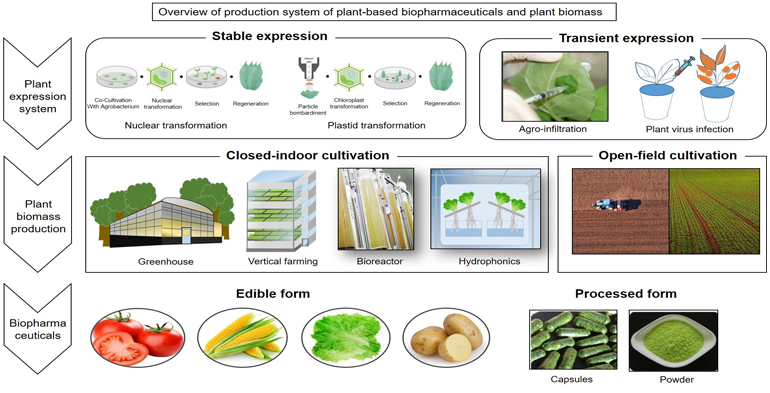
Dr. Md. Monirul Islam: Biopharming, also known as molecular farming is a field of biotechnology that involves using genetically modified plants or animals as bioreactors to produce valuable pharmaceuticals, vaccines, or industrial compounds. These genetically engineered organisms are designed to express specific genes that encode the desired products, allowing for large-scale production of high-value bioproducts. Biopharming offers a cost-effective and potentially safer alternative to traditional manufacturing methods for pharmaceuticals and other bioproducts.
Applications of Biopharming:
Pharmaceutical Production: Biopharming allows for the production of therapeutic proteins, antibodies, enzymes, and other complex molecules in plants or animals. These pharmaceuticals can be harvested, extracted, and purified for use in various medical treatments.
Vaccine Production: Biopharming can be employed to produce vaccines by expressing viral or bacterial antigens in plants or animals. The harvested products containing the antigens can be used to generate vaccines.
Industrial Enzyme Production: Biopharming facilitates the production of enzymes in plants or animals, which can be utilized in various industrial processes, such as biofuels, textiles, paper, and detergents.
Nutritional Enhancements: Genetically engineered crops can be developed to produce specific vitamins, minerals, or other beneficial compounds, enhancing the nutritional content of food.
Biodegradable Plastics: Biopharming enables the production of biodegradable plastics or polymers in plants, reducing reliance on petroleum-based plastics and their impact on the environment.
Phytoremediation: Biopharming can be used to create plants with improved abilities to absorb and detoxify pollutants from the environment, aiding in environmental cleanup efforts.
It's worth noting that the field of biopharming is continuously evolving, and ongoing research and development are expected to bring more applications and advancements in the future.
Writer: Senior Scientist, ASRBC, ACI Seed





















